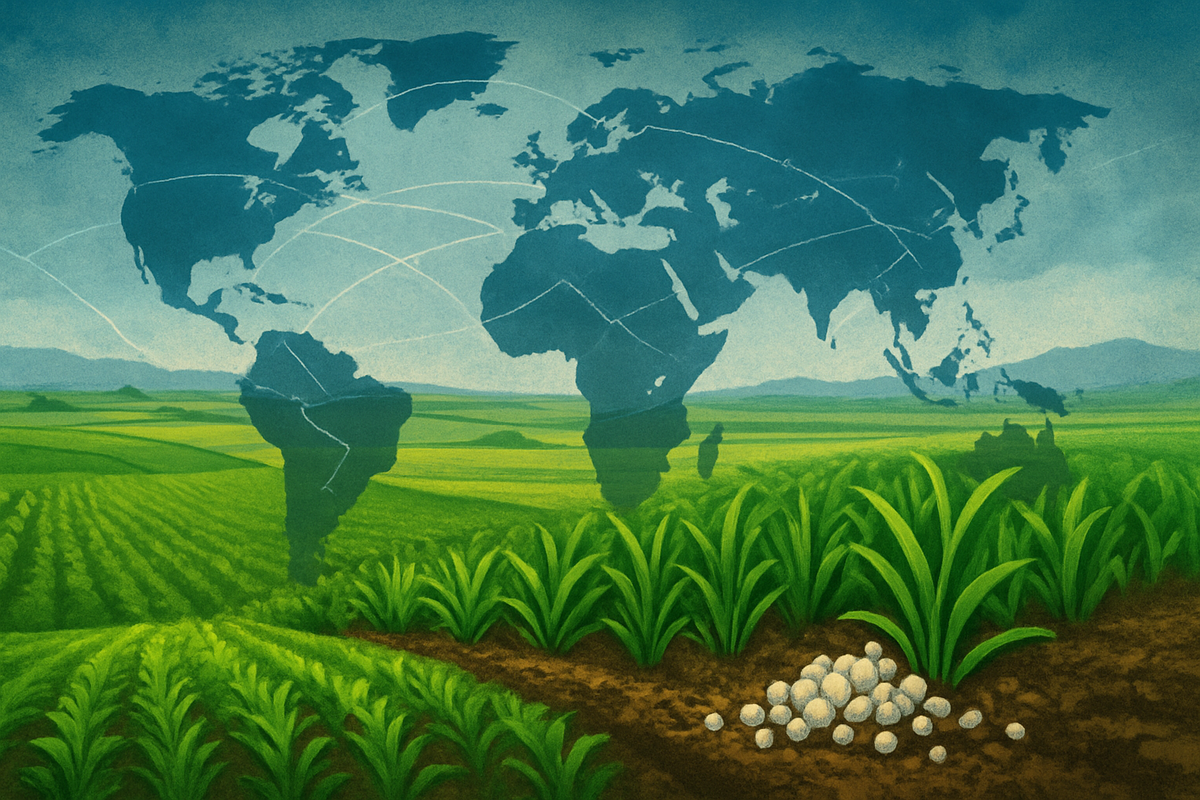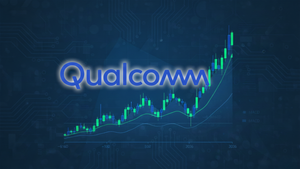
The global potash market is poised for significant expansion, with projections indicating it will reach an estimated US$97.92 billion by 2033. This robust growth forecast comes at a time when geopolitical tensions are fundamentally reshaping international trade routes, compelling importers to prioritize the security and resilience of their supply chains. The confluence of increasing global food demand and a volatile geopolitical landscape is creating a complex environment for potash, a critical agricultural input, driving both price fluctuations and strategic shifts across the agricultural sector.
This projected market surge is primarily fueled by an escalating global population and rising dietary demands, particularly for protein, which necessitate higher crop yields and, consequently, greater fertilizer usage. However, the path to this growth is anything but smooth. Geopolitical events, notably the ongoing repercussions of sanctions against Belarus and Russia's invasion of Ukraine, have severely disrupted traditional supply flows. These disruptions have forced a critical re-evaluation of sourcing strategies, leading to a scramble for diversified supplies and a heightened focus on domestic production capabilities, all of which contribute to the dynamic pricing environment and the strategic importance of potash in national security discussions.
Geopolitical Fault Lines Redraw the Potash Map
The journey to a nearly $100 billion potash market by 2033 is inextricably linked to a series of geopolitical tremors that have rattled global commodity markets. Potash, an indispensable nutrient for crop growth, has found itself at the nexus of international politics and economic strategy. The specific projection of $97.92 billion by 2033 aligns with several market analyses, which, while varying slightly in their exact figures, consistently point to a substantial expansion, with some forecasts even exceeding $100 billion by the early to mid-2030s, driven by a Compound Annual Growth Rate (CAGR) of 4.6% to 5.33%.
The timeline of events leading to this moment is critical. Sanctions imposed on Belarus in 2021 and Russia's military actions in Ukraine have had a profound and lasting impact. Russia and Belarus collectively account for a substantial portion of global potash supply—nearly 40%—and their diminished export capabilities have left a significant void. This disruption has spurred major importers like Brazil, China, and India, traditionally reliant on these sources, to aggressively seek alternative suppliers, dramatically altering global trade flows. Adding another layer of complexity, the United States officially designated potash as a critical mineral on November 6, 2025, underscoring its strategic importance for national and food security and signaling a concerted effort to reduce supply chain vulnerabilities. Earlier in 2025, threats of tariffs on Canadian potash by the Trump administration also injected volatility into the market, highlighting the sensitivity of potash prices to policy shifts.
Key players and stakeholders involved in this evolving landscape include major producers such as Nutrien (TSX: NTR, NYSE: NTR) from Canada, ICL Group (NYSE: ICL) from Israel, and Uralkali from Russia. Importers like Brazil, India, and China are actively engaged in diversifying their sourcing, while new entrants and projects, such as Brazil Potash and Millennial Potash's project in Gabon (backed by the U.S. DFC), are gaining traction as nations seek to bolster supply chain resilience. Initial market reactions to these geopolitical shifts have been characterized by "crazy volatility" and significant price increases, with prices at times quadrupling. As of Q3 2025, while some stability has returned, prices remain elevated compared to late 2024, with analysts anticipating a strong recovery in global potash demand in 2025 and potential for further price increases into early 2026.
Winners and Losers in the Shifting Potash Paradigm
The ongoing geopolitical reshaping of the potash market is creating distinct winners and losers among public companies and agricultural stakeholders. Companies with diversified production assets outside of the politically sensitive regions of Eastern Europe are particularly well-positioned to capitalize on the heightened demand for secure supplies.
Canadian producers, such as Nutrien (TSX: NTR, NYSE: NTR), the world's largest potash producer, stand to gain significantly. With Canada accounting for over 30% of global production and being the primary source for the U.S., Nutrien's stable and reliable supply chain makes it an attractive partner for nations prioritizing supply security. The recent U.S. designation of potash as a critical mineral further solidifies the strategic importance of Canadian supply. Similarly, ICL Group (NYSE: ICL), with its operations in Israel and Spain, benefits from its geographical diversification, offering an alternative to the disrupted Belarusian and Russian supplies. These companies are likely to see increased demand and potentially higher realized prices for their products as buyers are willing to pay a premium for reliability. Investments in new mining capacities and expansions by these established players could further entrench their market dominance.
Conversely, companies heavily reliant on potash from Russia and Belarus, particularly those in regions like Latin America that previously sourced nearly half their potash from these nations, face significant challenges. While major importers like Brazil, China, and India have not imposed direct sanctions, the logistical hurdles, increased shipping costs, and risks associated with financial restrictions and potential future sanctions make these supplies less attractive. This forces companies in these regions to either absorb higher costs from alternative sources or face supply shortages, impacting their agricultural output and profitability. Furthermore, the oligopolistic nature of the market, coupled with geopolitical instability, introduces risks of market manipulation, which could disproportionately affect smaller agricultural businesses and farmers who have less leverage in negotiating prices. Companies involved in the logistics and distribution of potash from sanctioned regions also face significant operational and financial headwinds.
Wider Significance: Food Security and Strategic Imperatives
The current upheaval in the potash market transcends mere commodity price fluctuations; it represents a profound re-evaluation of global food security and national strategic imperatives. This event fits squarely into broader industry trends emphasizing supply chain resilience, resource nationalism, and sustainable agriculture. The disruption of traditional potash flows from Russia and Belarus has starkly highlighted the vulnerabilities inherent in a global food system reliant on a concentrated supply base for critical inputs.
The ripple effects are far-reaching, impacting not only direct competitors and partners in the fertilizer industry but also the wider agricultural sector and, ultimately, global food prices. Farmers worldwide face increased input costs, which could translate into higher food prices for consumers, exacerbating inflationary pressures. Governments are increasingly viewing access to potash as a matter of national security, akin to energy resources. This perspective is driving policy implications, such as the U.S. adding potash to its Critical Minerals List, and fostering investments in domestic or geopolitically aligned alternative sources, as seen with the U.S. DFC funding for Millennial Potash's Gabon project. Regulatory frameworks may also evolve to encourage more diversified sourcing and potentially incentivize domestic production or strategic stockpiling.
Historically, commodity markets have always been susceptible to geopolitical events, from oil shocks in the 1970s to recent disruptions in natural gas supplies. The potash market's current situation draws parallels to past instances where strategic resources became tools or casualties of international conflicts. The key difference now is the intensified focus on food security in an era of rapid population growth and climate change, making the stable supply of agricultural inputs more critical than ever before. The concentration of potash production in a few countries, coupled with the essential nature of the product, creates an environment where geopolitical tensions can quickly translate into global economic and humanitarian concerns.
What Comes Next: Navigating a Volatile Future
The future of the potash market will be defined by a delicate balance of demand growth, strategic diversification, and persistent geopolitical influences. In the short term, the market is likely to continue experiencing price volatility. While some analysts anticipated more stable prices for 2025, the strong demand and ongoing geopolitical constraints suggest that price upticks, similar to those seen in late 2024 and early 2025, could persist into early 2026. Importers will continue their aggressive pursuit of alternative suppliers, leading to increased competition for non-Russian/Belarusian potash. This immediate period will also see a focus on optimizing existing supply chains and exploring shorter, more secure trade routes.
In the long term, several strategic pivots and adaptations are required. Major agricultural nations will likely double down on efforts to reduce their reliance on single-source suppliers. This could manifest in increased investments in new mining projects in geopolitically stable regions, such as those in Canada, Brazil, and Africa. Companies like Nutrien (TSX: NTR, NYSE: NTR) and ICL Group (NYSE: ICL) are well-positioned to expand their market share through organic growth and strategic acquisitions. Furthermore, there may be a push towards developing more efficient potash application methods, including precision farming technologies, to optimize usage and reduce overall demand growth pressure. Market opportunities will emerge for companies specializing in supply chain analytics, logistics, and alternative fertilizer technologies.
Potential scenarios and outcomes range from a gradual stabilization of prices as new supply comes online and trade routes normalize, to a prolonged period of elevated prices and supply chain fragmentation if geopolitical tensions escalate further. A critical factor will be the extent to which major powers, like the U.S., continue to engage in bilateral talks with Russia regarding fertilizer exports, as any significant restoration of Russian access to global markets could dramatically alter the supply landscape. Regardless, the emphasis on supply chain security and diversification is here to stay, reshaping investment decisions and strategic planning across the agricultural and mining sectors for the foreseeable future.
Comprehensive Wrap-Up: A New Era for Potash
The projection of the potash market reaching US$97.92 billion by 2033 underscores its undeniable importance in sustaining global food production, but this growth is set against a backdrop of profound geopolitical upheaval. The key takeaway is that potash is no longer just an agricultural commodity; it has become a strategic asset, deeply intertwined with national security and global stability. The disruptions emanating from Eastern Europe have fundamentally altered trade dynamics, forcing a global pivot towards supply chain resilience and diversification.
Moving forward, the market will be characterized by a heightened focus on reliable sourcing, with a premium placed on suppliers from politically stable regions. Companies with robust, geographically diverse operations, such as Nutrien (TSX: NTR, NYSE: NTR) and ICL Group (NYSE: ICL), are likely to thrive in this new environment. Conversely, nations and companies heavily reliant on historically dominant but now disrupted supply lines will continue to face challenges and higher costs. The long-term impact will likely see increased investment in new potash projects globally, a push for more sustainable and efficient fertilizer use, and potentially new international agreements aimed at securing critical agricultural inputs.
Investors should closely watch several key indicators in the coming months: the progression of new potash mining projects, particularly those outside traditional supply hubs; any shifts in government policies regarding critical minerals and agricultural trade; and the ongoing geopolitical landscape, especially concerning Russia and Belarus. The interplay of these factors will dictate price stability, supply availability, and ultimately, the profitability of companies operating within this vital sector. The potash market is entering a new era, one where geopolitical considerations are as influential as fundamental supply and demand dynamics.
This content is intended for informational purposes only and is not financial advice





